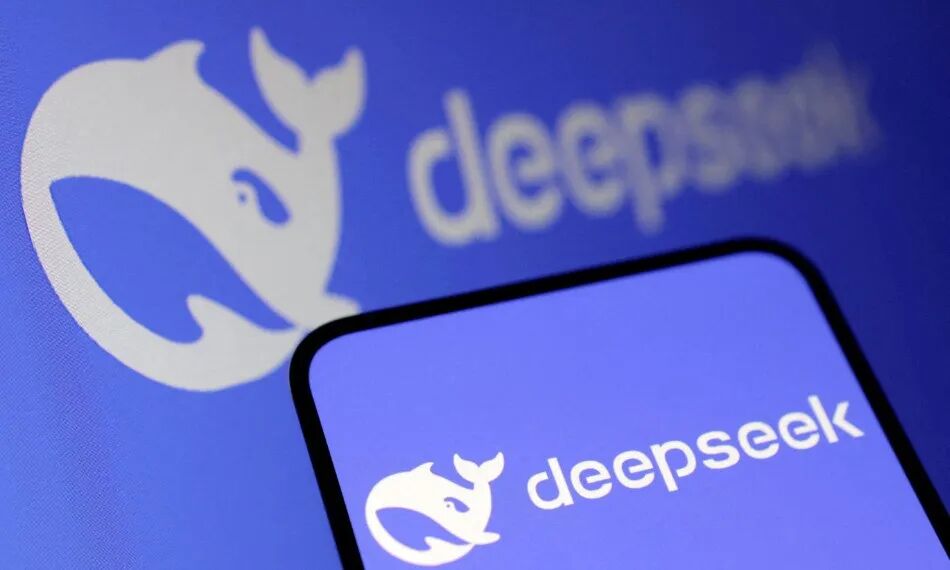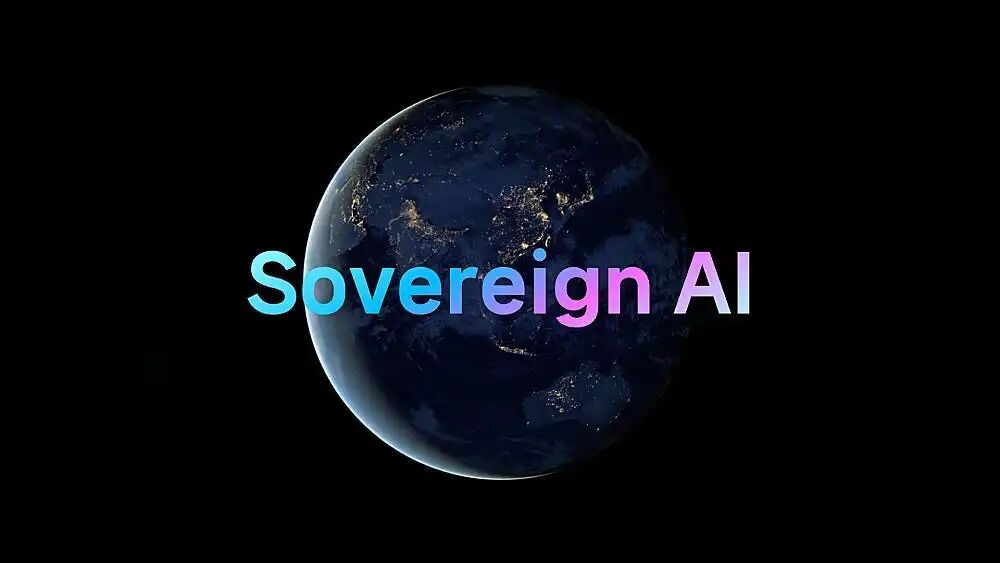Product Unlaunched, Yet Valued at $8 Billion in 7 Months! How Does This ‘American DeepSeek’ Achieve Such a Feat?
![]() 10/14 2025
10/14 2025
![]() 540
540
In the realm of artificial intelligence, the fervor of capital markets appears boundless. However, even in an era replete with ‘miracles,’ Reflection AI, a startup, has shattered all conventional perceptions of speed and valuation with a meteoric rise. 
Emerging from stealth mode in March 2024, it soared from a $545 million valuation to an astonishing $8 billion in just seven months—a staggering 15-fold increase.
Its latest funding round raised an impressive $2 billion, drawing support from elite investors such as Nvidia, Sequoia Capital, and Lightspeed. Notably, angel investor Reid Hoffman, co-founder of LinkedIn and Silicon Valley’s ‘networking king,’ joined the ranks—a veritable luxury lineup! More astonishingly, all this occurred before the launch of a single official product.
The company’s founders are two luminaries from Google DeepMind: Misha Laskin, who led the core team for the Gemini project’s reward model, and Ioannis Antonoglou, a co-creator of AlphaGo, which defeated world Go champion Lee Sedol. This stellar founding team provides the strongest endorsement for its astronomical valuation. 
However, beyond the eye-popping funding and ‘dream team’ pedigree lies a deeper strategic positioning: Reflection AI’s ambition to become the ‘Western DeepSeek.’
What profound industry insights underpin this positioning? How will Reflection AI’s ‘open’ business model operate in a world seemingly dominated by closed-source models?
Silicon Valley Insider will dissect this Silicon Valley ‘superstar’s’ strategic intent and business logic, exploring its path to victory in the trillion-dollar AI chess game.

Why the ‘American DeepSeek’ is Essential
Reflection AI’s narrative is not merely a tale of technological idealism but a precise strategic choice driven by profound market insights and geopolitical-technical competition. Its positioning as the ‘American DeepSeek’ can be understood through three dimensions: an ‘awakening’ from the East, a market vacuum begging to be filled, and a consensus on a critical technical path.
Pressure and Warning from the East
In an interview with TechCrunch, Reflection AI’s founder Misha Laskin stated bluntly, ‘DeepSeek and Qwen (Tongyi Qianwen) are our wake-up calls. If we do nothing, the global standards for intelligence will be set by others, not the U.S.’
This crisis-laden statement reveals the most crucial backdrop for its strategy. Prior to 2024, the consensus was that training and deploying large-scale Mixture-of-Experts (MoE) architecture models was a ‘dragon-slaying’ technique reserved for giants like Google and OpenAI.
The MoE architecture decomposes models into multiple ‘expert’ subnetworks, activating only relevant experts during tasks, thereby enabling higher performance at lower computational costs. It is seen as the key path to stronger AI capabilities.
However, Chinese AI companies like DeepSeek broke this technological monopoly in the open-source domain. They successfully trained and released powerful MoE models openly, with performance on par with top closed-source models in multiple benchmarks. 
This breakthrough reshaped the global AI competitive landscape, proving that cutting-edge AI capabilities are no longer the exclusive domain of a few closed-source labs.
For the U.S. tech sector, this posed not just a technical challenge but a strategic warning. Laskin’s concern is that if the Western world lacks high-quality open models, global enterprises, developers, and even nations may turn to Chinese open-source alternatives.
The repercussions would extend beyond commercial losses to the erosion of underlying technical standards, ecosystems, and even ideological influence.
Thus, Reflection AI was born with a strong sense of mission: to create a U.S. counterpart capable of rivaling Eastern open-source forces on the ‘open intelligence’ front.
Enterprises’ and Sovereign Nations’ Quest for ‘Security’
Laskin further highlights a massive commercial opportunity: ‘Enterprises and sovereign nations typically avoid Chinese models due to potential legal implications. So, you either accept a competitive disadvantage or rise to the challenge.’
This accurately depicts a core pain point in the global high-end AI market. For multinational corporations and national governments, selecting a foundational model is not merely a technical decision but a strategic one concerning data security, supply chain stability, compliance, and long-term control.
They face a dilemma:
Closed-source models: This means deeply binding core business and data lifelines to a handful of tech giants. High API costs, inability for deep customization, data privacy concerns, and ‘vendor lock-in’ risks loom like the Sword of Damocles.
Existing open-source models: While flexible, Chinese models dominate the performance frontier. However, geopolitical tensions, data privacy laws (e.g., GDPR), and intellectual property complexities make Western enterprises and governments hesitant to adopt them.
In this market vacuum where ‘closed-source lacks freedom, and open-source lacks trust,’ Reflection AI sees its golden opportunity. It aims to offer not just a high-performance model but ‘security’ and ‘control.’ By providing a U.S.-origin, cutting-edge, open-weight foundational model, it precisely targets two trillion-dollar markets: large enterprises and sovereign AI.
Sovereign AI, a concept gaining prominence, refers to a nation’s ability to build and control its AI infrastructure and models. More countries recognize AI as a future national core competitiveness (competitive edge) and must reduce reliance on external tech giants. Reflection AI’s emergence provides an ideal technological foundation for these nations.
The Triumph of MoE Architecture and Platform Capabilities
Reflection AI’s confidence stems from its team’s deep expertise in cutting-edge AI technologies. They claim on X: ‘We’ve built what was once deemed possible only in the world’s top labs: a large language model and reinforcement learning platform capable of training massive MoE models at the frontier scale.’
The keyword here is ‘platform.’ They emphasize building not just a model but a ‘factory’ for continuously producing and iterating frontier models. This is why capital markets are willing to write blank checks even at the ‘PPT stage.’
By claiming mastery of large-scale MoE training, Reflection AI signals to the market that it stands alongside DeepMind and OpenAI on the most promising path to Artificial General Intelligence (AGI). Opening this capability will disrupt existing market dynamics.

How Will ‘Openness’ Generate Revenue?
A common question arises: If models are open, how does the company profit? Reflection AI’s business model cleverly addresses this. It is not traditionally open-source but adopts a strategic ‘open-weight’ model, constructing a clear dual-layer client monetization structure.
Redefining ‘Openness’: Open Weights, Not Everything
Reflection AI’s ‘open’ strategy mirrors Meta’s Llama series and France’s Mistral AI—a balance between commercial interests and ecosystem building.
What is opened? Model weights—the core parameters of trained models, akin to AI’s ‘brain.’ Anyone can download, use, modify, or build applications atop these weights.
Laskin explains, ‘The most influential aspect is the model weights, as anyone can use them and start tinkering.’
What is retained? Complete datasets, training code, and infrastructure stacks—the ‘recipes’ and ‘production lines’ for training powerful models, constituting the company’s core IP and technical barriers.
The strategic value of this model lies in:
Rapid ecosystem building: Free model weights attract global developers, researchers, and small enterprises, fostering a vast user base and active community. This drives innovation, feedback, and brand influence, establishing de facto technical standards.
Sustaining technical moats: Retaining core training details ensures competitors cannot easily replicate success and grants the company irreplaceable advantages in offering premium commercial services.
Two Core Paid Clients: Enterprises and Sovereigns
Above its massive free user ecosystem, Reflection AI targets two high-value paid client segments whose pain points align perfectly with its ‘open-weight’ model.
Client 1: Large Enterprises
For Fortune 500 companies, deeply integrating AI into core business processes faces severe challenges:
Cost black hole: Reliance on closed-source APIs means computational costs are dictated by suppliers, potentially spiraling into astronomical figures with increased usage.
Lack of control: Inability to modify model underpinnings hinders deep optimization for specific business scenarios (e.g., financial risk control, drug discovery).
Data security risks: Uploading sensitive business data to third-party platforms always carries leakage risks.
Vendor lock-in: Once business deeply relies on an API, migration costs become prohibitive.
Reflection AI’s solution addresses these pain points. Enterprises can acquire model weights and deploy them on private clouds or local servers, enabling:
Ownership and control: Enterprises truly own the model, customizing and optimizing it at will. Cost predictability: A one-time licensing or subscription fee replaces the ‘bottomless pit’ of per-use API costs.
Absolute data security: All data remains within corporate firewalls.
Essentially, Reflection AI sells enterprises the ability to build ‘waterworks’ rather than ‘on-demand tap water’ (APIs).
Client 2: Sovereign AI 
For nations seeking technological independence, Reflection AI provides the cornerstone for national AI strategies. A country can purchase commercial licenses for its models and:
Train national language models: Fine-tune using local language and cultural data to ensure AI aligns with national contexts.
Empower critical sectors: Apply to defense, public safety, healthcare, education, and other national priorities without fearing backdoors or ‘chokeholds.’
Cultivate local AI ecosystems: Foster domestic AI enterprises and research institutions.
This represents a market potential far exceeding traditional enterprise software. Every mid-to-large nation could become a client worth hundreds of millions or even billions of dollars.
3. Revenue Model Summary: Free Acquisition, Premium Monetization
In summary, Reflection AI’s business model forms a clear pyramid:
Base (Free): Academia, developers, and startups—ecosystem builders and product evangelists.
Middle (Paid): Large enterprise clients—scalable revenue through commercial licenses, technical support, and consulting.
Peak (Paid): Sovereign AI clients—strategic partnerships yielding the highest-value contracts.

While Reflection AI’s narrative is thrilling and its valuation sky-high, we must recognize that all its current value rests on ‘promises’: promises of team capability, technical roadmap correctness, and market-disrupting products.
However, its first major text-based model is not expected to be released until early 2026. Prior to this, its valuation of up to $8 billion has always carried a hint of ‘The Emperor’s New Clothes.’ Can the market and investors maintain their patience for over a year? And if the performance of the model released at that time falls short of expectations, how will they face a sharp correction in valuation? This is the most direct and severe test it faces.
Meanwhile, the sector chosen by Reflection AI is destined to be a red ocean. It not only has to directly face the continuous iterative pressure from Chinese models like DeepSeek and Qwen but also compete with Europe’s ‘open-source beacon’ Mistral AI and the Llama series backed by tech giant Meta for the throne of the ‘best open model.’
Furthermore, despite having different business models, it ultimately has to vie for customers with OpenAI, Anthropic, and Google. Closed-source models still possess significant advantages in exploring the limits of performance and product usability.
And now, the stage is set, and the whole world is waiting for the protagonist—the promised cutting-edge model—to make its official debut next year. At that time, we will witness firsthand whether this is the great beginning of a trillion-dollar story or a dazzling capital bubble.








